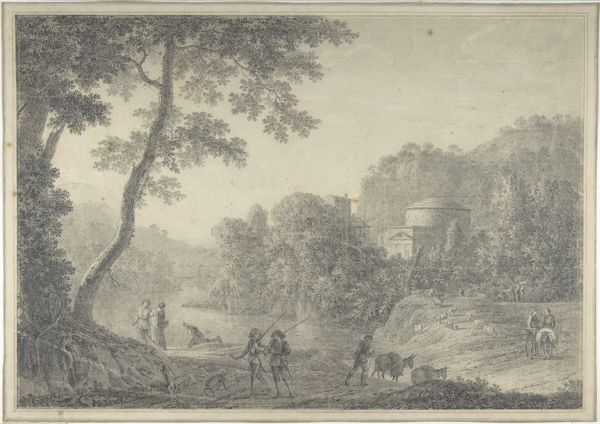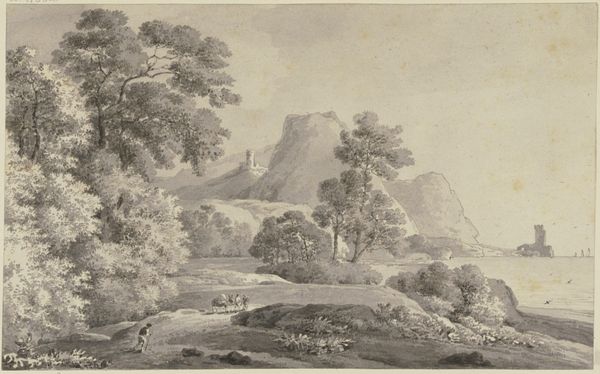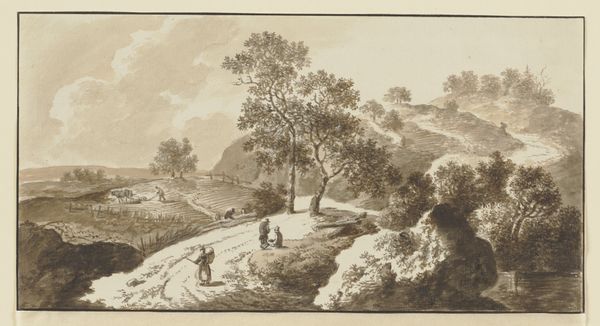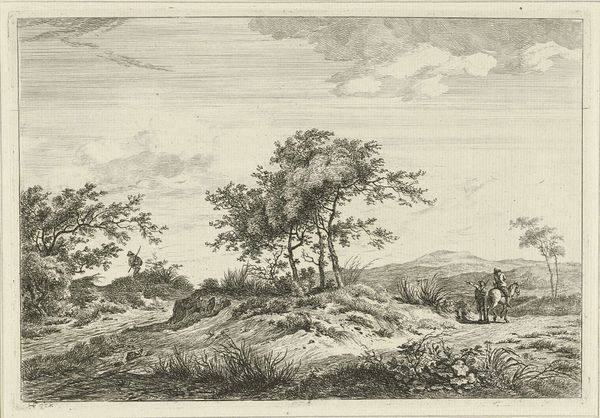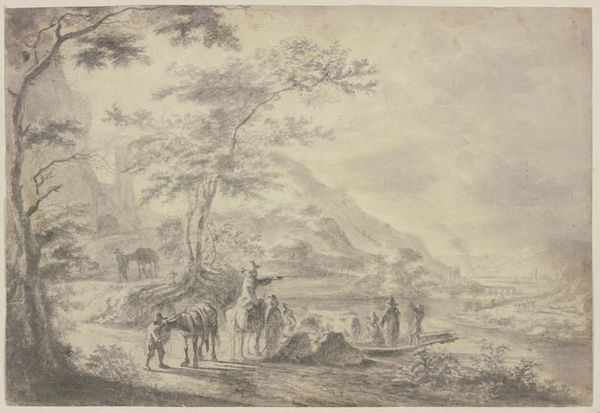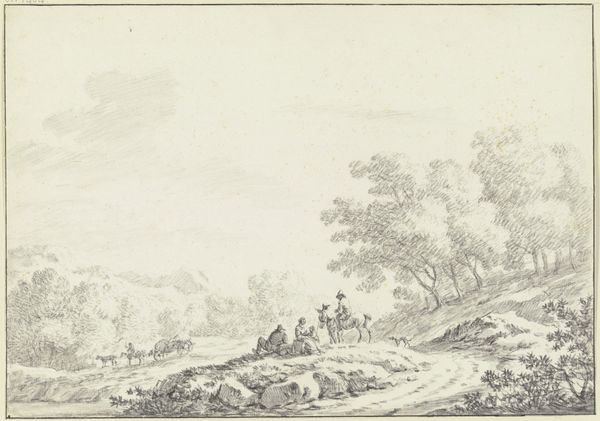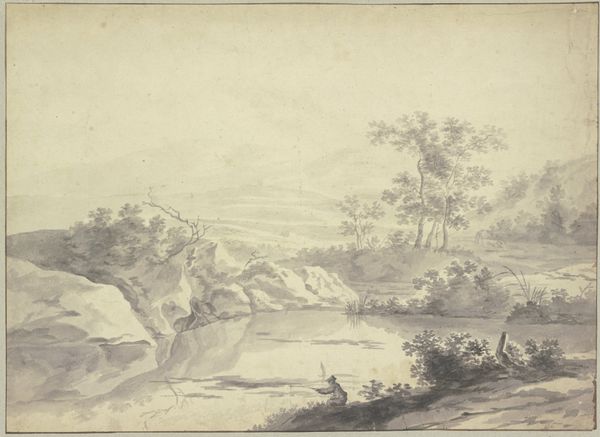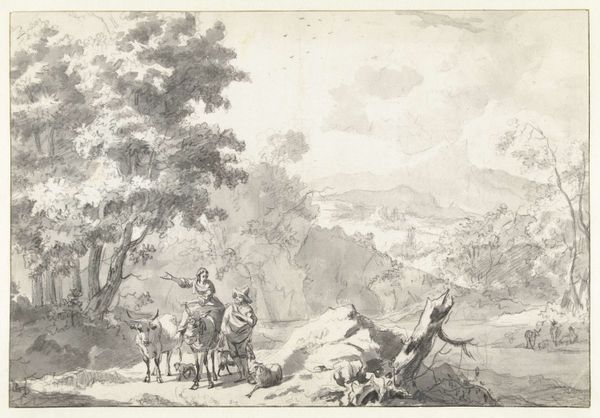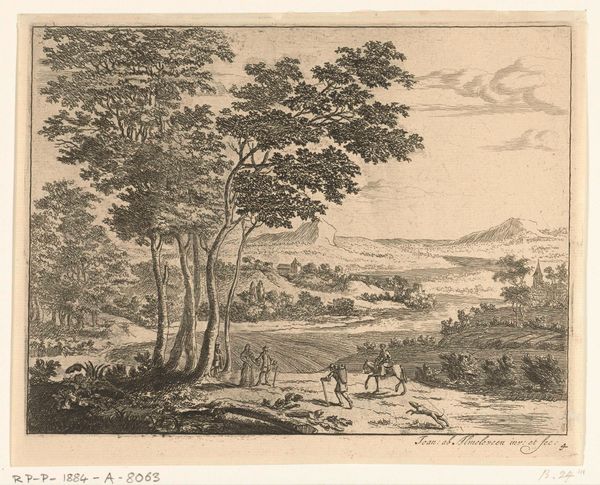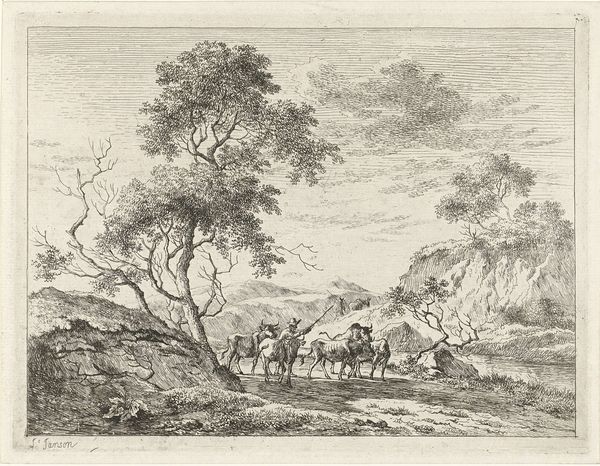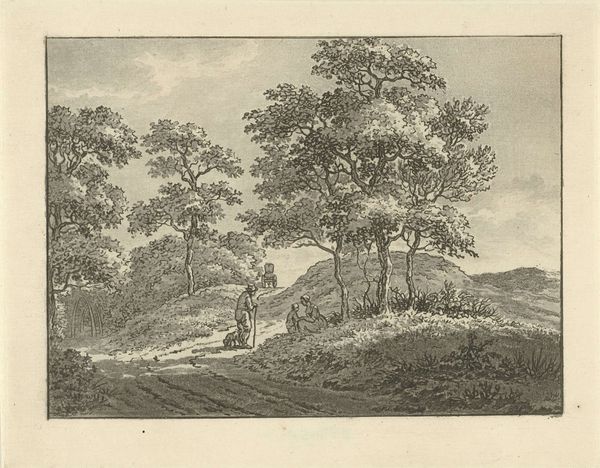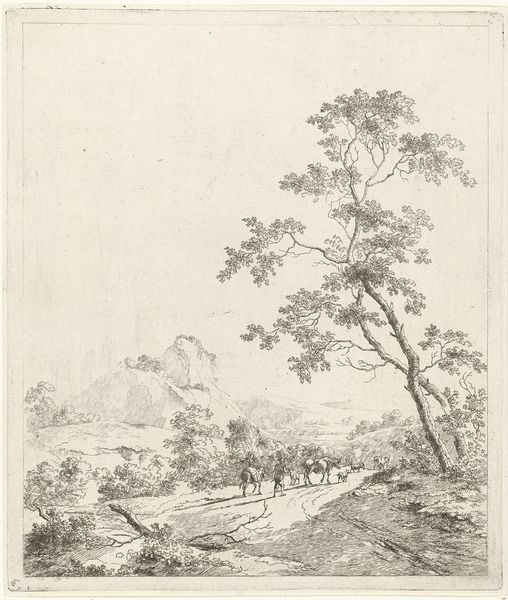
An einem Fluss hoher Gebirge, links unter einer Baumgruppe zwei Kühe und Schafe mit einem Hirten Possibly 1686
0:00
0:00
drawing, ink, chalk, pen, pastel
#
drawing
#
baroque
#
landscape
#
ink
#
chalk
#
pen work
#
pen
#
pastel
Copyright: Public Domain
Editor: This drawing, "An einem Fluss hoher Gebirge, links unter einer Baumgruppe zwei Kühe und Schafe mit einem Hirten," possibly from 1686, is by Jan Vermeer van Haarlem the Elder. It uses chalk, pen, ink, and pastel to depict a pastoral scene. The landscape is really striking but also quite serene, with the high mountains contrasting the small figures. What do you see in this piece, from your perspective? Curator: This landscape offers a fascinating glimpse into the construction of Dutch identity in the late 17th century. We must consider this idealized portrayal of rural life against the backdrop of increasing urbanization and global trade that defined the Dutch Golden Age. Who exactly gets to enjoy and belong in these seemingly 'natural' environments? Is there an element of romanticising the plight of working-class shepherds in order to assuage anxieties around resource extraction and labor exploitation in newly colonized territories? Editor: That’s a really interesting point, I hadn't considered the colonial connection. The mountains almost feel like a theatrical backdrop now, instead of real geography. Curator: Exactly. Think about the function of landscape in art – how does it legitimize claims to territory or serve as a form of escapism for urban elites? How is labor and the human presence depicted here in the context of land use? The seemingly timeless scene then speaks volumes about power structures operating behind the canvas. Editor: It definitely complicates the initial impression of simple beauty. I’m also now thinking about the accessibility of this landscape; who was this art *for*, and who would've had access to a rural retreat or the luxury to ignore labour at the time? Curator: Precisely! The questions about audience and historical context open up much more relevant critical avenues for its understanding. Editor: I see it so differently now – thank you for sharing these critical perspectives! Curator: Of course! Thinking through these connections helps us confront and learn from history's blind spots.
Comments
No comments
Be the first to comment and join the conversation on the ultimate creative platform.
